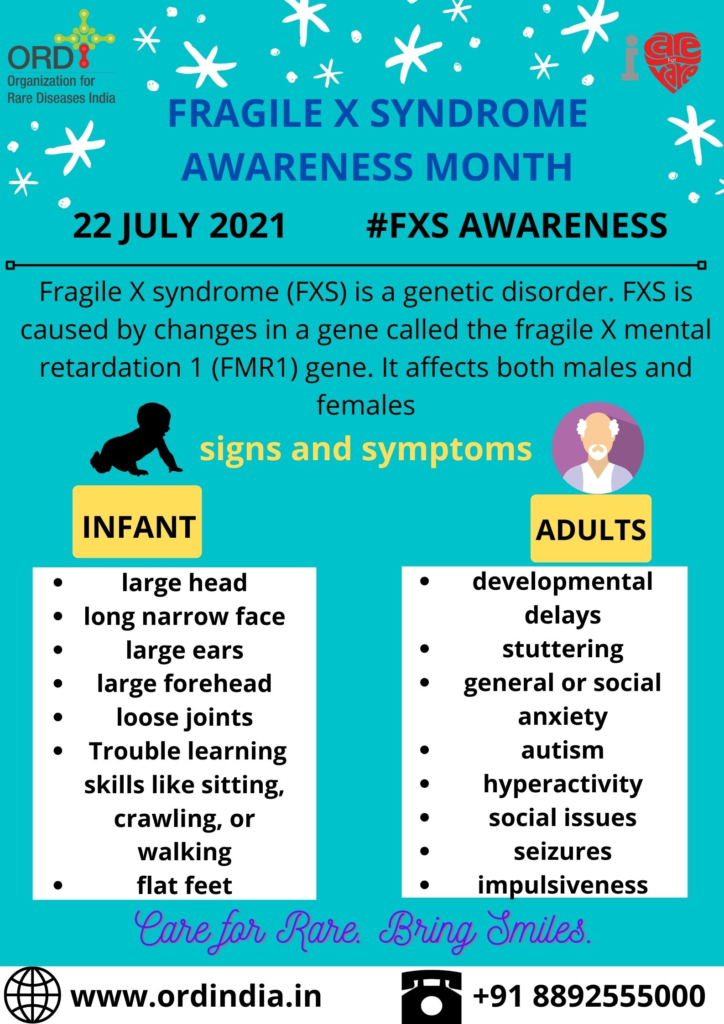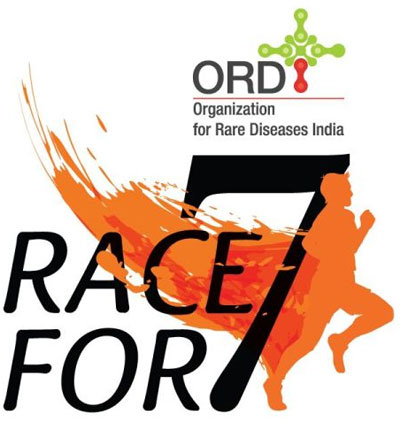Fragile X syndrome (FXS) is a hereditary disorder that causes mental retardation. FXS is caused by mutations in the fragile X mental retardation 1 (FMR1) gene, which was initially discovered by scientists. The learning, behaviour, looks, and health of a kid with fragile X syndrome are all affected.
Signs and symptoms:-
Causes:-
Fragile X syndrome is caused almost entirely by a mutation in the FMR1 gene that expands a DNA sequence known as the CGG triplet repeat. This DNA region is normally duplicated anywhere from 5 to 40 times. The CGG section, on the other hand, is repeated more than 200 times in patients with fragile X syndrome. The FMR1 gene is turned off (silenced) by the abnormally enlarged CGG region, which inhibits the gene from making FMRP. This protein’s absence or deficiency affects nervous system functioning, resulting in the signs and symptoms of fragile X syndrome.
Fragile X syndrome is caused by mutations in the FMR1 gene. The FMR1 gene directs the production of a protein known as FMRP. This protein aids in the establishment of synapses, which are specialised connections between nerve cells, and helps regulate the creation of other proteins. Nerve impulses must be relayed through synapses.
Affected Populations :-
- Fragile X syndrome affects about 1 in 2500-4000 males and 1 in 7000-8000 girls, according to conservative estimates.
- Female carrier status is anticipated to affect 1 in 130-250 people, while male carrier status is estimated to affect 1 in 250-800 people.
Diagnosis
Molecular genetic testing of the FMR1 gene confirms the diagnosis of fragile X syndrome. There is prenatal testing accessible. FMR1 is distinguished by a CGG trinucleotide sequence that is repeated six to 50 times in unaffected individuals. A complete mutation in the FMR1 gene consists of more than 200 CGG repeats and hypermethylation, resulting in the inability to create the FMR1 protein. Fragile X syndrome affects nearly all males and more than half of females with complete mutations. Premutation carriers with 50 to 200 CGG repetitions are not cognitively impaired, although they may experience somatic or psychological symptoms. They also have a higher risk of developing premature ovarian failure and FXTAS. If hypermethylation is present, the fragile X phenotype can emerge in a premutation carrier. In contrast, the symptoms may be missing in a person with a complete mutation without hypermethylation, indicating that fragile X syndrome is caused by a lack of FMR1 protein..
These tests can be performed during pregnancy to determine whether an unborn child has fragile X syndrome:
- Amniocentesis (testing a sample of amniotic fluid for the FMR1 gene change) • Chorionic villus sampling (CVS) (testing a sample of placental cells for the FMR1 gene change)
A blood test can be used to diagnose fragile X syndrome after the kid is born. This test checks for an alteration in the FMR1 gene.
The TP-PCR reaction was used to diagnose Fragile X. (P1 – 6 pm: P2 – 6 pm: P3 – 0.6pm) was the primer concentration. 1X buffer, 2.5X Q Solution, dNTPs (0.17mM dATP, 0.17mM dTTP, 0.85mM dCTP, and 0.85 mM dGTP), 5U Taq DNA Polymerase, and 100 ng genomic DNA were used in the reaction. The total volume reached 15 litres. 0.5 litres of LIZ 500 were denatured and fragmented using the following parameters: injection time 5 seconds, injection voltage 15 kW, run time 28 minutes, polymer POP4 The CGG repeat expansion was found as a stutter peak pattern of the amplified allele by TP-PCR analysis, and AGG punctuations were detected as a distinct patch interrupting the stutter peak pattern in the electropherogram.
Treatments :-
The symptoms of Fragile X syndrome can be managed but not cured. Your child’s healthcare professional may prescribe a number of drugs, but treatment focusing on coping and behavioural skills should also be involved.
- There is no cure for fragile X. Treatments can aid in your child’s learning and behaviour management. Options include:
- Speech and language treatment
- Occupational therapy to assist with everyday activities
- Behaviour therapy
- Medications to prevent seizures, manage ADD symptoms such as hyperactivity, and treat other behavioural disorders
Other names for this condition
- Fra(X) syndrome
- FRAXA syndrome
- FXS
- Marker X syndrome
- Martin-Bell syndrome
- X-linked mental retardation and macroorchidism
REFERENCES
- https://www.aafp.org/afp/2005/0701/p111.html
- https://www.webmd.com/children/what-is-fragile-x-syndrome
- https://medlineplus.gov/genetics/condition/fragile-x-syndrome/
- https://emedicine.medscape.com/article/943776
- https://www.nichd.nih.gov/health/topics/fragilex/conditioninfo/treatments
We appreciate the efforts of Ms Sakshi Karra, Ms Tamma Medha, Ms Yashvi Soni and Ms Shriti Paul, Msc, BMG, VIT, Vellore in creating the content for Fragile X syndrome Disease.




